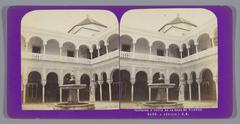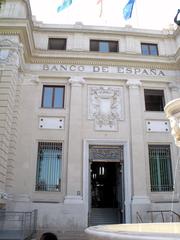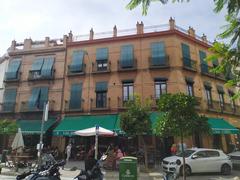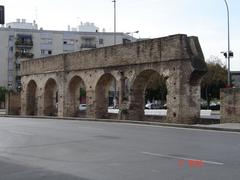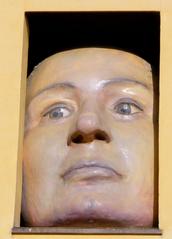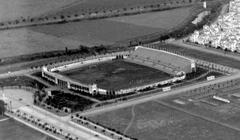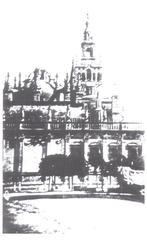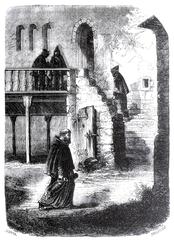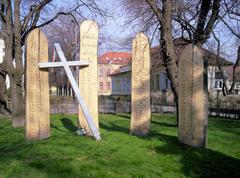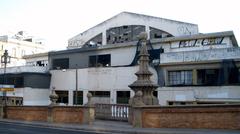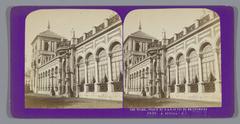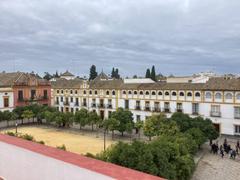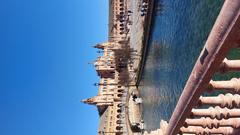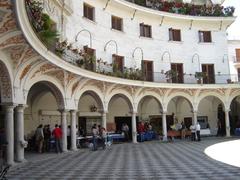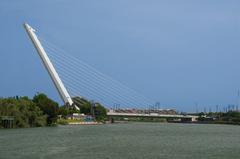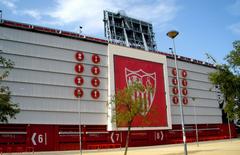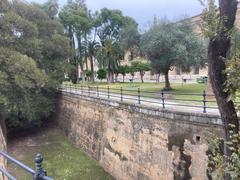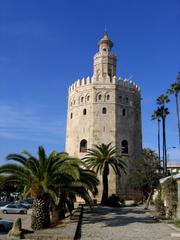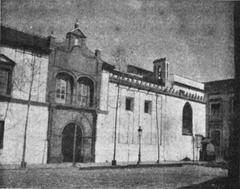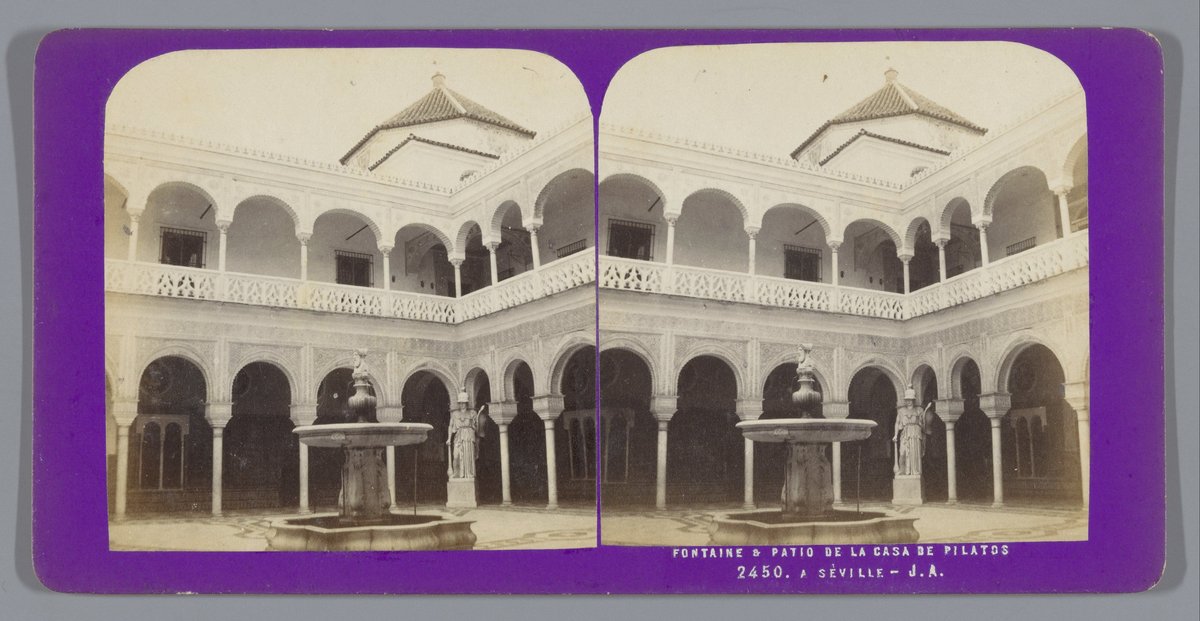
Visiting Casa de Pilatos: Hours, Tickets, and Historical Insights
Date: 17/07/2024
Why Visit Casa de Pilatos?
Casa de Pilatos, located in Seville, Spain, is a remarkable historical site that offers a unique window into the region’s architectural and cultural heritage. The palace is an exquisite blend of Gothic, Mudéjar, Renaissance, and Romantic styles, reflecting the diverse influences that have shaped Andalusia over the centuries. Constructed in 1483 by Pedro Enríquez de Quiñones and Catalina de Ribera, the palace underwent significant transformations in the early 16th century under the influence of Renaissance architecture introduced by Fadrique Enríquez de Ribera. The name ‘Casa de Pilatos’ is inspired by Pontius Pilate’s house in Jerusalem, which Fadrique visited during his pilgrimage to the Holy Land (Fundación Casa Ducal de Medinaceli).
Visitors to Casa de Pilatos can marvel at its central courtyard, adorned with intricate Mudéjar plasterwork, Gothic arches, and Renaissance elements. The palace also houses an impressive collection of classical sculptures and features gardens designed in the Romantic style. Managed by the Fundación Casa Ducal de Medinaceli, the site has been meticulously preserved and restored, ensuring that its historical and architectural integrity remains intact for future generations (Fundación Casa Ducal de Medinaceli).
Whether you’re an architecture enthusiast, a history buff, or simply seeking to explore Seville’s rich cultural tapestry, Casa de Pilatos is a must-visit destination. This guide provides comprehensive information on the palace’s history, architectural features, visitor information, and travel tips to help you plan an unforgettable visit.
What You Will Learn
- Introduction
- History and Architectural Evolution
- Origins and Early History
- Renaissance Influence
- Architectural Features
- Courtyard (Patio Principal)
- Italian Renaissance Elements
- Mudéjar and Gothic Elements
- Later Additions and Modifications
- Preservation and Restoration
- Visitor Information
- Visiting Hours
- Ticket Prices
- Travel Tips
- Significance and Legacy
- Conclusion
- FAQs
Exploring Casa de Pilatos: History, Architecture, and Visitor Information in Seville
Introduction
Casa de Pilatos, nestled in the heart of Seville, Spain, is a historical gem that exemplifies the rich architectural tapestry of Andalusia. Blending Gothic, Mudéjar, Renaissance, and Romantic styles, this palace is not only an architectural marvel but also a significant cultural landmark. Whether you’re a history enthusiast or an architecture aficionado, Casa de Pilatos offers a unique glimpse into Seville’s storied past.
History and Architectural Evolution
Origins and Early History
Casa de Pilatos is a quintessential example of Andalusian architecture, blending Gothic, Mudéjar, Renaissance, and Romantic styles. The construction of this magnificent palace began in 1483 under the orders of Pedro Enríquez de Quiñones, the Adelantado Mayor of Andalusia, and his wife, Catalina de Ribera. The initial phase of construction was heavily influenced by the Gothic and Mudéjar styles, which were prevalent in Seville during the late 15th century.
Renaissance Influence
The most significant transformation of Casa de Pilatos occurred in the early 16th century when Fadrique Enríquez de Ribera, the son of Pedro Enríquez de Quiñones, embarked on a pilgrimage to the Holy Land. Upon his return, he was inspired by the Renaissance architecture he had encountered in Italy. This influence is evident in the palace’s design, particularly in the Italian Renaissance elements that were incorporated into the existing Gothic and Mudéjar structures.
Fadrique’s journey also led to the palace’s name, Casa de Pilatos, as it is said to be modeled after Pontius Pilate’s house in Jerusalem. The blend of Italian Renaissance with traditional Andalusian styles created a unique architectural masterpiece that stands out in Seville’s rich architectural landscape.
Architectural Features
Courtyard (Patio Principal)
The central courtyard, or Patio Principal, is the heart of Casa de Pilatos and a prime example of the fusion of architectural styles. The courtyard is surrounded by a two-story arcade with Gothic arches on the lower level and Renaissance arches on the upper level. The intricate Mudéjar plasterwork and azulejos (ceramic tiles) that adorn the walls are a testament to the palace’s Andalusian heritage.
The courtyard also features a central fountain, which is a common element in Andalusian palaces, symbolizing the importance of water in Islamic culture. The combination of these elements creates a serene and harmonious space that reflects the diverse cultural influences that have shaped Casa de Pilatos.
Italian Renaissance Elements
One of the most striking features of Casa de Pilatos is the presence of Italian Renaissance elements, particularly in the decoration and layout of the palace. The influence of the Renaissance is evident in the use of classical columns, pilasters, and decorative motifs such as garlands and medallions. The palace also houses a collection of classical sculptures, many of which were brought from Italy by Fadrique Enríquez de Ribera.
The grand staircase, which leads to the upper floor, is another example of the Renaissance influence. The staircase is adorned with a coffered ceiling and frescoes depicting mythological scenes, reflecting the Renaissance fascination with classical antiquity.
Mudéjar and Gothic Elements
Despite the strong Renaissance influence, Casa de Pilatos retains many elements of Mudéjar and Gothic architecture. The Mudéjar style, which is characterized by the use of intricate geometric patterns and decorative plasterwork, is particularly evident in the palace’s ceilings and walls. The Gothic influence can be seen in the pointed arches and ribbed vaults that are present in some of the palace’s rooms.
The combination of these styles creates a unique architectural language that is both harmonious and eclectic. The use of different materials, such as wood, plaster, and ceramic tiles, adds to the richness and diversity of the palace’s design.
Later Additions and Modifications
In the 19th century, Casa de Pilatos underwent further modifications under the ownership of the Dukes of Medinaceli. The Romantic style, which was popular during this period, was incorporated into the palace’s design. This included the addition of new rooms and the renovation of existing ones, as well as the introduction of new decorative elements such as stained glass windows and ornate furniture.
One of the most notable additions from this period is the garden, which was designed in the Romantic style and features a variety of exotic plants and trees. The garden provides a tranquil retreat from the hustle and bustle of the city and is a testament to the palace’s enduring appeal and adaptability.
Preservation and Restoration
Casa de Pilatos has been meticulously preserved and restored over the years to maintain its historical and architectural integrity. The palace is currently managed by the Fundación Casa Ducal de Medinaceli, which is dedicated to the preservation of Spain’s cultural heritage. The foundation has undertaken several restoration projects to ensure that the palace remains in pristine condition for future generations to enjoy.
One of the most significant restoration projects was the renovation of the azulejos, which had deteriorated over time. The restoration involved the careful cleaning and repair of the tiles, as well as the replacement of missing or damaged pieces. This project was carried out by skilled artisans who used traditional techniques to ensure that the restored tiles matched the original ones in both appearance and quality.
Visitor Information
Visiting Hours
Casa de Pilatos is open to visitors throughout the year. The typical visiting hours are from 9:00 AM to 6:00 PM, with extended hours during the peak tourist season. It is advisable to check the official Fundación Casa Ducal de Medinaceli website for the most up-to-date visiting hours.
Ticket Prices
Ticket prices for Casa de Pilatos vary depending on the type of visit. General admission is typically around €10, with discounts available for students, seniors, and groups. There are also options for guided tours, which provide a more in-depth exploration of the palace’s history and architecture.
Travel Tips
- Best Time to Visit: The best time to visit Casa de Pilatos is during the spring and autumn months when the weather is pleasant, and the crowds are smaller.
- Nearby Attractions: Casa de Pilatos is conveniently located near several other historical sites in Seville, including the Seville Cathedral, the Alcázar of Seville, and the Metropol Parasol.
- Accessibility: The palace is accessible to visitors with disabilities, with ramps and elevators available in most areas. However, some sections may have limited accessibility.
- Special Events and Guided Tours: Casa de Pilatos often hosts special events, including concerts, exhibitions, and cultural festivals. Guided tours are available in multiple languages and are highly recommended for a comprehensive understanding of the palace’s history and architecture.
- Photography: Photography is allowed in most areas of Casa de Pilatos, making it a perfect spot for capturing the beauty of Andalusian architecture. However, the use of tripods and flash is usually restricted.
Significance and Legacy
Casa de Pilatos is not only a stunning example of Andalusian architecture but also a symbol of the cultural and historical richness of Seville. The palace’s unique blend of Gothic, Mudéjar, Renaissance, and Romantic styles reflects the diverse influences that have shaped the city’s architectural heritage. It is a testament to the creativity and ingenuity of the architects and craftsmen who built and decorated the palace over the centuries.
The palace’s significance extends beyond its architectural beauty. It has also played an important role in the cultural and social life of Seville. Over the years, it has hosted numerous events and gatherings, including concerts, exhibitions, and cultural festivals. Today, it continues to be a vibrant cultural hub, attracting visitors from around the world who come to admire its beauty and learn about its history.
Conclusion
Casa de Pilatos stands as a testament to Seville’s rich cultural and architectural history. Its blend of Gothic, Mudéjar, Renaissance, and Romantic styles makes it a unique and fascinating destination for visitors. Whether you’re exploring the intricate details of its courtyards or learning about its historical significance, Casa de Pilatos offers a captivating experience. For more information on visiting Casa de Pilatos, including the latest updates on visiting hours and ticket prices, visit the official Fundación Casa Ducal de Medinaceli website.
FAQs
What are the visiting hours for Casa de Pilatos?
Casa de Pilatos is generally open from 9:00 AM to 6:00 PM, with extended hours during peak tourist season. Check the official website for the latest updates.
How much do tickets cost for Casa de Pilatos?
General admission is around €10, with discounts available for students, seniors, and groups. Guided tours are also available at an additional cost.
Is Casa de Pilatos accessible for visitors with disabilities?
Yes, the palace is accessible with ramps and elevators in most areas, though some sections may have limited accessibility.
What are some nearby attractions?
Nearby attractions include the Seville Cathedral, the Alcázar of Seville, and the Metropol Parasol.
Can I take photographs at Casa de Pilatos?
Yes, photography is allowed in most areas, but the use of tripods and flash is usually restricted.
Call to Action
Planning a visit to Seville? Don’t miss out on the chance to explore Casa de Pilatos. Download the Audiala mobile app for more travel tips and updates, and follow us on social media for the latest news and special offers.
Summary and Final Thoughts
Casa de Pilatos stands as a testament to the rich cultural and architectural heritage of Seville. Its unique blend of Gothic, Mudéjar, Renaissance, and Romantic styles offers a fascinating glimpse into the city’s historical evolution. The palace’s meticulous preservation and the efforts of the Fundación Casa Ducal de Medinaceli ensure that this architectural gem continues to captivate and inspire visitors from around the world (Fundación Casa Ducal de Medinaceli).
From its stunning courtyard and intricate tile work to its classical sculptures and serene gardens, Casa de Pilatos provides a rich and immersive experience. Whether you are exploring its architectural features, learning about its history, or attending one of its cultural events, the palace offers something for everyone. Don’t miss the opportunity to visit this remarkable site and delve into the heart of Seville’s cultural legacy. For more information on visiting hours, ticket prices, and events, visit the official Fundación Casa Ducal de Medinaceli website and consider joining a guided tour for a deeper understanding of this historical treasure.
Sources and Further Reading
- Exploring Casa de Pilatos: History, Architecture, and Visitor Information in Seville, 2023, Fundación Casa Ducal de Medinaceli
- Discover Casa de Pilatos: Visiting Hours, Tickets, and Cultural Significance in Seville, 2023, Fundación Casa Ducal de Medinaceli
- Essential Visitor Tips for Casa de Pilatos: Hours, Tickets, and Nearby Attractions in Seville, 2023, Fundación Casa Ducal de Medinaceli
